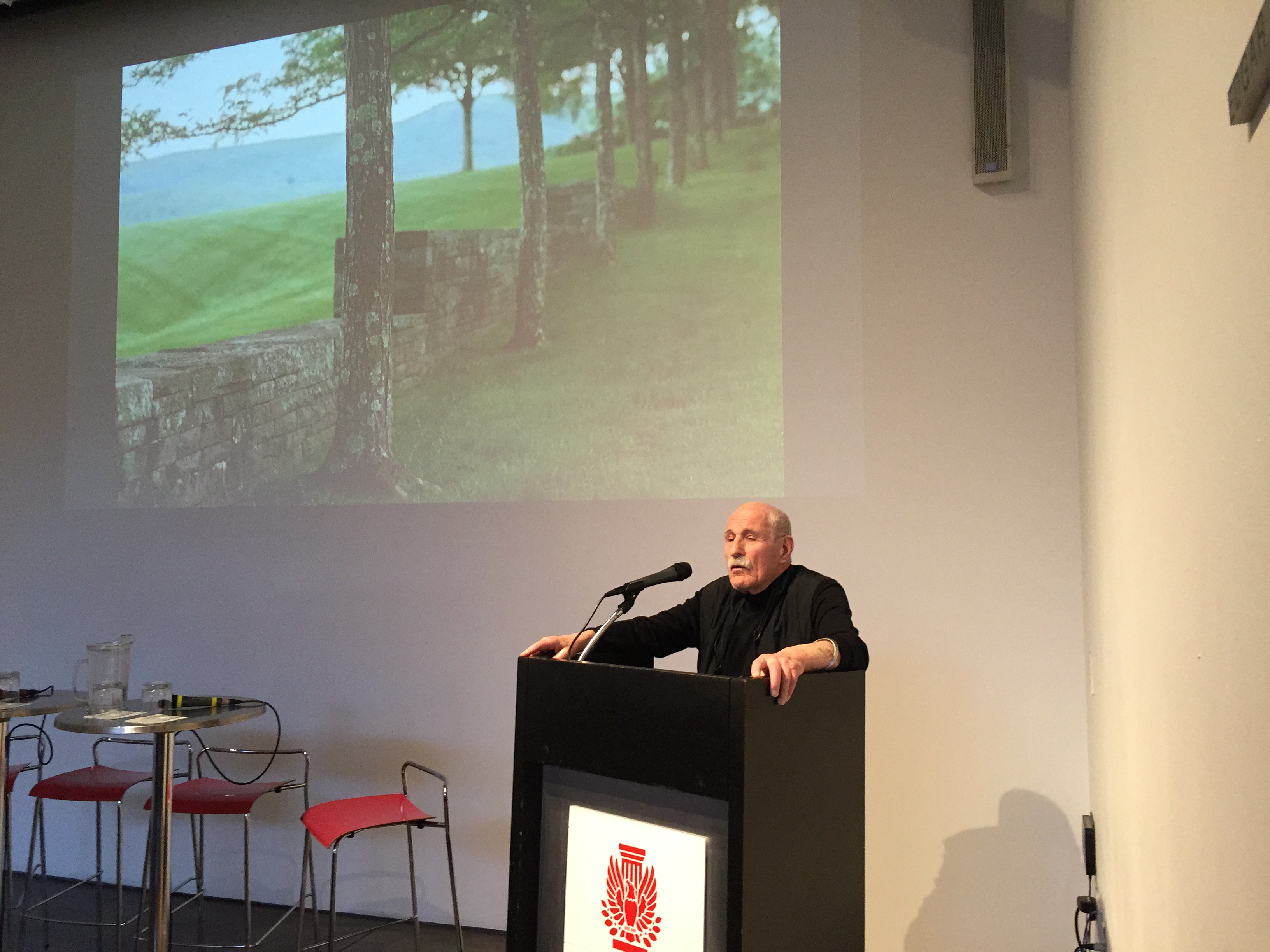by James Way
There’s an old joke among architects (based on a Frank Lloyd Wright quip) that if a client doesn’t like the building, they can plant ivy. This may, in part, explain architects’ apparent hesitancy to work with landscape architects until relatively recently. However, M. Paul Friedberg, FASLA, explained that Dan Kiley’s relationships with architects showed that landscaping could enhance a building’s setting and extend its presence.
Carol Loewenson, FAIA, made the welcoming remarks at the Reflections on Kiley event. Her insightful observations on Kiley, during which she noted the “simplicity, beauty, and elegance” of his work, were echoed by the panelists. John Arbuckle, Assoc. AIA, who moderated the evening, made a poignant remark: “Preservation of landscape architecture is more challenging than buildings, and many have been lost or significantly altered.”
Referring to himself as “the last man standing,” Friedberg, a landscape architect a generation after Kiley, situated the professional context of landscape architecture in the late 1950s. For one, it went “from an invisible discipline to one of the respected arts.” Friedberg was advised upon graduating in 1954 to look for work as a horticulturalist. Although Olmsted had a lock on the profession, his practice didn’t fit the changing post-war city. Having inherited form and geometry from French gardens, Kiley designed more humanistic and friendly spaces. There must have been something in the water because Kiley and his classmates broke landscape architecture wide open.
Henry Arnold, FASLA, who worked for Kiley, reiterated the landscape architect’s strong sense of geometry, and noted it was used to sculpt spaces that were part of the architecture and landscape, whether to frame views, as in Chicago’s Olive Park, or extend the building into space as the allée of trees at the Eero Saarinen-designed Irwin Union Bank in Columbus, IN. The latter points to the fragility of landscape architecture. The low canopy of Linden trees was replaced with taller trees to ease the interaction of patrons arriving by car and the birds drawn to the canopy. Though Ada Louise Huxtable claimed that Independence Mall in Philadelphia was one of the best urban plazas, it didn’t last more than 15 years due to subsoil conditions. One of the most unfortunate losses Arnold mentioned was Kiley’s drawings: “Not being done on computer those days, we lost his drawings when his house burned down.”
A relative newcomer, photographer Matt Carbone was commissioned to photograph the Irwin Union Bank (now known as the Irwin Conference Center), and the North Christian Church (also by Saarinen) in Columbus, IN. Carbone, who initially thought the landscaping too simple, found the sites very difficult to accurately document – Kiley, moving through the landscape, repeatedly hid and revealed the architecture and vistas.
Friedberg added that documentation rarely captures the seasonal experience. Carbone confirmed that Kiley’s landscapes for Saarinen were sensory and full of surprises. Finding the context and use of the architecture and space allowed Carbone to explore an idea about the ensemble.
The conversation ultimately landed on landscape’s place in urbanism. Friedberg commented that too many see it as empty space ready for advertising or further development. Arnold added that landscape today has less of a place as an integrated part of urban design. The High Line is an exception, one all participants saw as a new way to introduce urban landscapes and for people to see and interact with the city. It could be the urban landscape renaissance that public space so desperately needs in dense cities.
“The Landscape Architecture Legacy of Dan Kiley” is on view at the Center for Architecture until 06.20.15.
James Way, Assoc. AIA, co-chair of the AIANY Marketing and Communications Committee and Marketing Manager at Morris Adjmi Architects, frequently contributes to eOculus.
Event: Reflections on Kiley
Location: Center for Architecture, 04.16.15
Speakers: John Shreve Arbuckle, Assoc. AIA, President, DOCOMOMO New York/Tri-State (moderator); Henry F. Arnold, FASLA, Founding Principal Emeritus, Arnold Associates Landscape Architecture & Urban Design; Matthew Carbone, Photographer; and M. Paul Friedberg, FASLA, Founder, M. Paul Friedberg and Partners
Organizers: Center for Architecture


